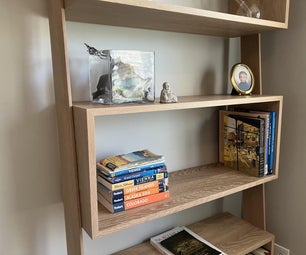Introduction: Hemispherical Photobioreactor Algae Farming (HEASH Project)
This project is designed to provide steps that can guide you to making your own hemispherical photobioreactor, or algae farm dome for those who like smaller words. The bioreactor is made from two acrylic domes glues together.
Most of the parts needed:
Item - Source
- 4" of 6" diameter acrylic tube - usplastics.com
- 30" diameter acrylic dome with bottom lip 1/8" thick - www.cleardome.com
- 32" diameter acrylic dome with bottom lip 1/8" thick - same as above
- Pipe Tap - 1 inch x 11.5 NPT
- 1 inch npt male to 1 inch barbed fitting
- Barbed x NPT Male
- Weld-On 4 Acrylic Adhesive
- 3" x 3" 3/4" thick acrylic square
- 1/8" thick 3" wide 6 foot length plexiglass (not acrylic)
- 1 inch valve threaded
- 1 inch threaded nipple
- premium aquarium hose (translucent kind not clear, must be soft)
- 1/2" barbed tee
- 3' of 1/2" drip line
- pond pump
- various hoses and fittings...make sure you live near a home depot and irrigation supply house...
- dusk to dawn switch
- algae
- bleach
Alga-Gro Freshwater Medium
Step 1: Glue Together Domes
Glue together the two domes. One dome is 2 inches less diameter so it is set in the larger one. The connecting surfaces are glued together and force is applied to remove any bubbles and thus a chance for leaking. We used 30 and 32 inch domes with a 3 inch flange. Use many clamps to keep pieces together. There should now be a water proof chamber formed between the domes. In the next step we will build the drain for this vessel.
Step 2: Attach Drain
Take the 3" square plexiglass peice and glue it to the middle of the bottom of the dome chamber. This is done so that a hole can be drilled through both domes and the square and have plenty of room for the threading bit. Once glue is dry drill a 1-5/32 hole for the 1 inch x 11.5 NPT pipe tap right in the center between the two dome walls. Use the pipe tap to thread the holes. Once threaded you can attach the nipple and threaded 1 inch valve. This now serves as a dome chamber drain. You can optionally place one of these near the top of the dome for a fill fitting if you wish to have continuous loop algae production.
Step 3: Cut Top Hole and Glue on Ring
Cut a hole in the top of the upper dome that is 6" diameter. Use the inside of the 6 inch diameter 4" acrylic piece as a form. Drill pilot hole then finish cut with a router. Spiral o flute bits work best for routing plastic. Once its been cut glue the 6" tube section onto the opening with acrylic glue. If you need it to be sealed you can build a cap for the top (do not glue cap)
Step 4: Build Bubble Walker and Air Supply
Bubble walker- is a device used for agitation of the water and allows photosynthesis to occur more efficiently for the algae. The walker is made form acrylic plexi glass and metal washers. The main body is one piece of plexiglass beveled with a heat gunned into a U shaped body and drilled through for washer mounting and air. There are multiple washers on the two bolts allowing a balance of weight to lift from bubble flow ratio allowing for a gentling forward propel around the dome. Experimentation is required for optimal results. The device has a air line attached to feed air supply and works with adjustable hose clamps to control air pressure for optimum results.
Air Supply - The air supply is fixed rate piston driven pump and allows for adequate air pressure, as determined by successful forward movement of the walker..
Air Return - If you need to return build a cap for the air inlet and air outlet capture and return to wherever its needed. In our case we vented it back to our earthship to provide fresh air.
Step 5: Water Cooling System
The water cooling system keeps the algae cool during the daytime. Cut a peice of 1/2" drip line in a 2-3 foot section and poke holes all over in it facing towards the top of the dome. Try to make the flow laminar and not spray in the air. Connect the ends with a 1/2" barbed T and connect to a submersible pump. Place the pump in a full kiddie pool or equivalent water volume for cooling.
Glue 3" plexiglass around the outside rim of the flange to create a channel for water to flow back into the pond.
Step 6: Install LED Light Bank
Place led light arrays face up into the bottom of the dome. Place the arrays onto blocks or some other platform to prevent flood water damage. The dome will protect it from rain. Use a dusk to dawn plug for the led array.
Step 7: Bleach, Fertilize, and Innoculate
Bleach everything with dilution. clean throughly with clean water after and fill. Fertilize with Alga-Gro Freshwater Medium, and add algae culture. Adjust the aeration to as little as possible while maintaining forward movement.
This instructable is part of the HAESH Hackerspace Earthship Project. Check it out. www.haesh.com on the web or on instructibles.

Participated in the
Makerlympics Contest

Participated in the
Full Spectrum Laser Contest

Participated in the
Spring's Coming Contest












